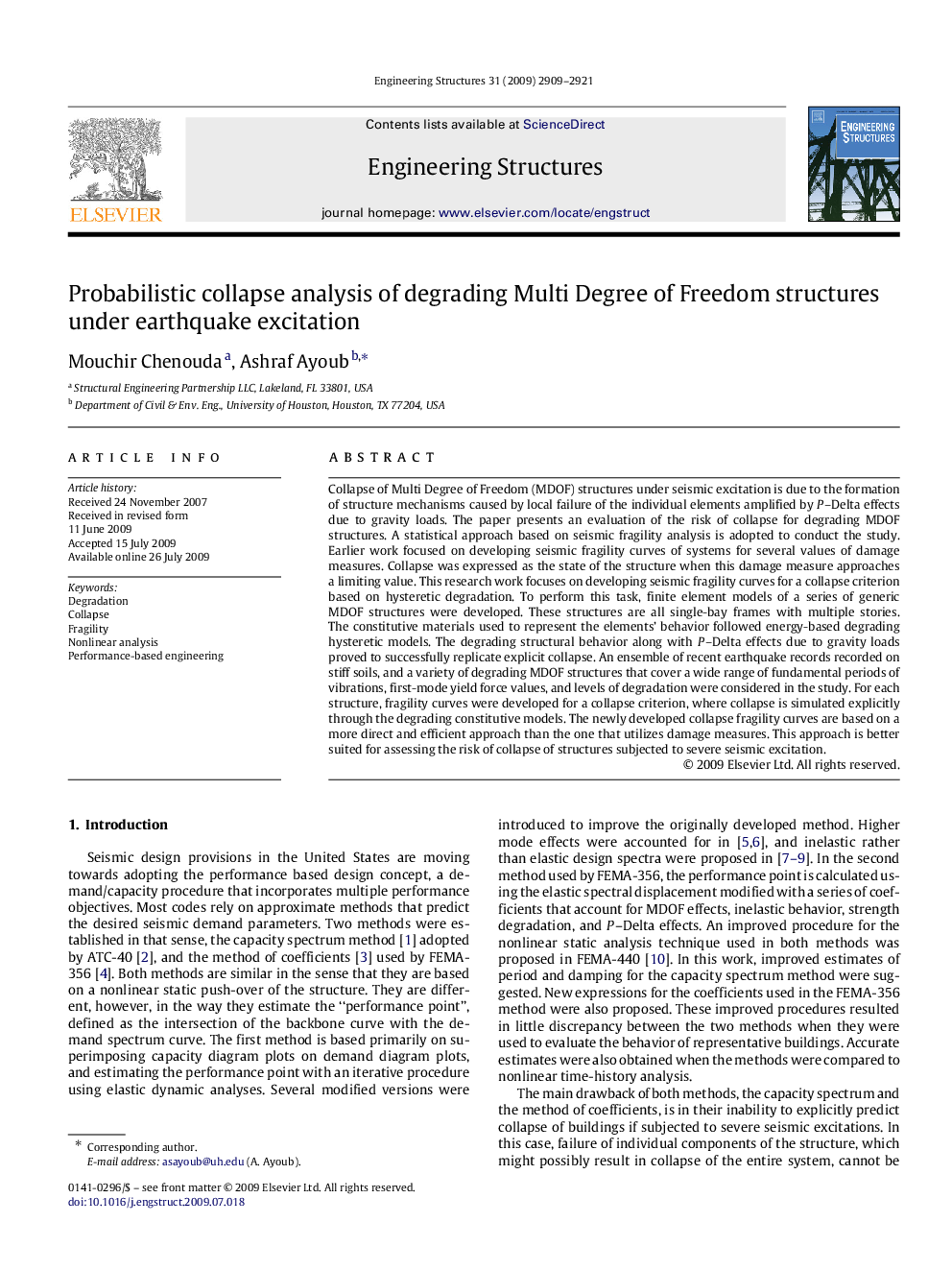| کد مقاله | کد نشریه | سال انتشار | مقاله انگلیسی | نسخه تمام متن |
|---|---|---|---|---|
| 268345 | 504432 | 2009 | 13 صفحه PDF | دانلود رایگان |

Collapse of Multi Degree of Freedom (MDOF) structures under seismic excitation is due to the formation of structure mechanisms caused by local failure of the individual elements amplified by PP–Delta effects due to gravity loads. The paper presents an evaluation of the risk of collapse for degrading MDOF structures. A statistical approach based on seismic fragility analysis is adopted to conduct the study. Earlier work focused on developing seismic fragility curves of systems for several values of damage measures. Collapse was expressed as the state of the structure when this damage measure approaches a limiting value. This research work focuses on developing seismic fragility curves for a collapse criterion based on hysteretic degradation. To perform this task, finite element models of a series of generic MDOF structures were developed. These structures are all single-bay frames with multiple stories. The constitutive materials used to represent the elements’ behavior followed energy-based degrading hysteretic models. The degrading structural behavior along with PP–Delta effects due to gravity loads proved to successfully replicate explicit collapse. An ensemble of recent earthquake records recorded on stiff soils, and a variety of degrading MDOF structures that cover a wide range of fundamental periods of vibrations, first-mode yield force values, and levels of degradation were considered in the study. For each structure, fragility curves were developed for a collapse criterion, where collapse is simulated explicitly through the degrading constitutive models. The newly developed collapse fragility curves are based on a more direct and efficient approach than the one that utilizes damage measures. This approach is better suited for assessing the risk of collapse of structures subjected to severe seismic excitation.
Journal: Engineering Structures - Volume 31, Issue 12, December 2009, Pages 2909–2921